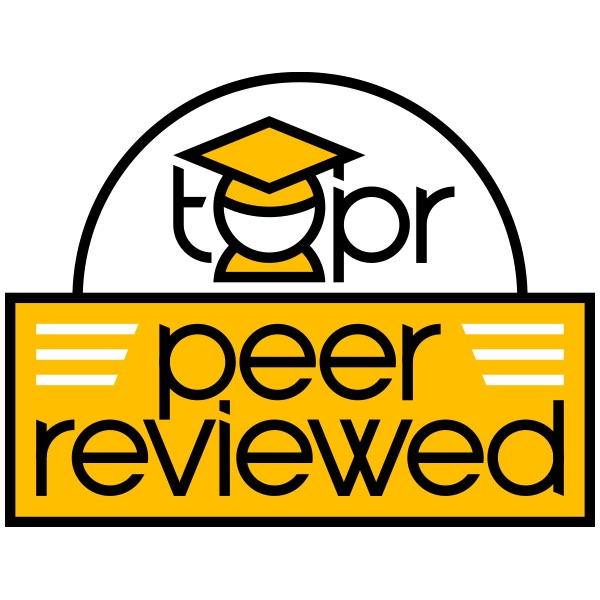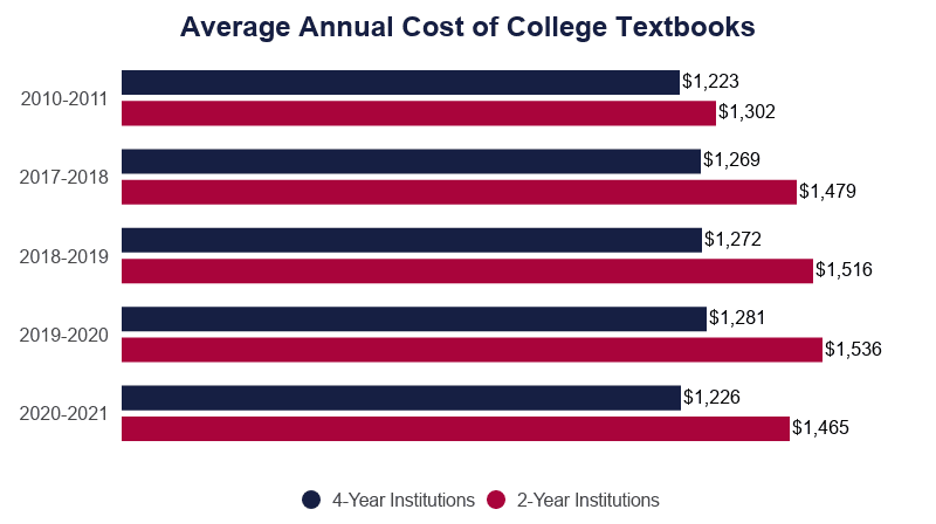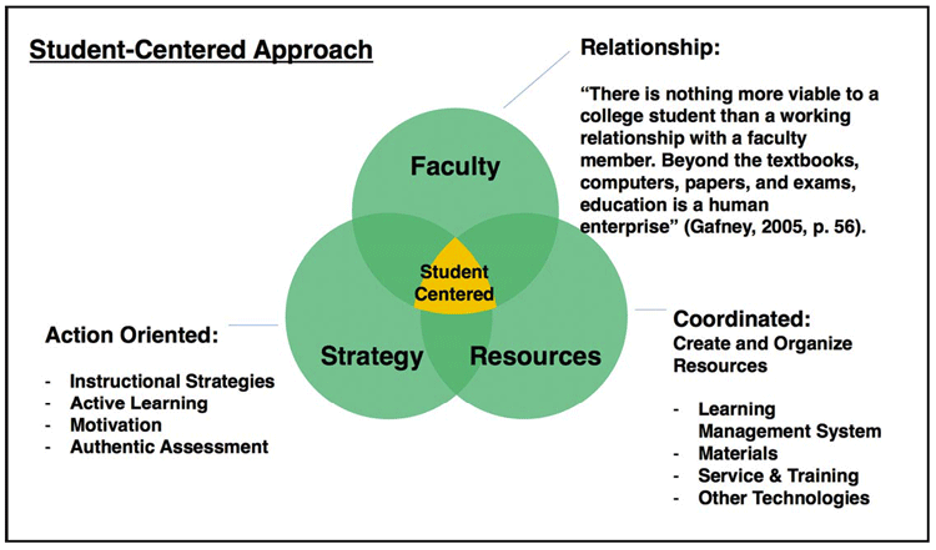Tags: Adult learning Theory, Application/Method/Process/Technique, Content, Instructional Model, Interaction, Peer-Reviewed Entry

Description
College textbooks provide highly specialized content and are expensive whether they are in hard copy or digital format. The average cost of college books (see graph below) declined in the 2020-2021 academic year, in part due to an increased rate of textbook rentals and use of digital course materials such as OERs (Hanson, 2022).

The popularity of textbooks is starting to wane in favor of social media platforms. A pedagogical shift is happening as students search to find alternatives to the high cost of texts by preferring visual platforms for learning; 53% of Generation Z students prefer YouTube over textbooks to educate themselves. This presented an opportunity for nursing online leadership faculty to make a pronounced pedagogical shift that places multimedia content as the preferred choice over textbooks, while maintaining substantive content rigor and controlling costs (Lynch, 2020). It should be clarified that webinars may be obtained from a variety of sources, and YouTube is but one of them.
In the undergraduate and graduate programs in nursing, there are required courses on leadership and management at the micro (bachelor’s) and macro (masters) levels. In seeking alternatives to costly textbooks, we found a plethora of educational services that offer live webinars and on demand products on highly specialized content such as regulations, laws, and business changes. On demand webinars are presented by the top professionals, experts in their immediate field; concise content that is accurate and updated continually to provide timely and relevant information (Lorman, 2023). The faculty’s decision to replace the Leadership and Management course textbook with educational service webinars, maintained content rigor, met course learning outcomes, and significantly reduced student costs. In addition, students could use these webinars for continuing education, if needed in their professional roles.
Trebian’s model for student-centered approach (2019) was used as a framework to develop a technology-based solution while advancing learning in the online environment. This model represents a three-pronged approach to learning in the new information age, engaging Faculty, Strategy, and Resources.

Faculty
Faculty must provide effective communication and feedback to students in a consistent, substantial (qualitative and quantitative), and timely manner. (Trebian, 2019). The following were faculty tasks:
- Revise content overviews to incorporate on demand webinars.
- Revise assignments to include student reflection of webinar content to assess knowledge and align application to practice.
- Communicate how the technology is accessed and the value of this resource to learning.
- Assess student success in the course.
- Assess student response to technology materials.
Link to Example artifact(s)
Faculty utilizing technology-based solutions must ensure students can access and understand content as well continue to meet program and course learning outcomes (Trebian, 2019).
- Replace the course textbook with on demand webinars that correspond to content topics and learning outcomes.
- Identify resources that include the perspective of the top professionals in their field.
- Maintain course and content rigor.
- Reduce student materials costs.
- There is no cost to the college.
Resources
Technology provides access to new information that creates, promotes, and maintains active-learning experiences that benefit faculty and students (Trebian, 2019).
- Design a learning pathwayof on demand webinars to replace the traditional textbook.
- Offer a Certificate of Completion in Leadership and Management for reviewing all assigned webinars. Completion Certificate is worth 5 points towards final grade. As well, students can add the Certificate of Completion to their resume.
Lessons Learned
This innovation was a valuable way to provide students with current, updated information by experts in various fields and allow students to maintain active participation in their learning experience (Badowski, 2021, & Browne et al., 2022). The nursing program emphasizes the importance of providing a caring online learning environment and strives to provide engaging, valid, and enjoyable ways to enhance the learning for students. This student-centered relationship was enhanced by this pedagogical shift and provided further evidence that a caring faculty can influence student learning (Jezuit et al., 2020). Communication between faculty and students remained substantive, allowing for a seamless transition within the course. Students comments (see Student Feedback below) demonstrate effectiveness of this strategy.
Nursing faculty stress the importance for leaders to have self-awareness, current information provided by experts as well as the ability to apply this knowledge in practice (Mansel & Einion, 2019). By providing current on demand webinars in an asynchronous environment, the students were able to maintain an engaging learning experience and incorporate expert information into reflective assignments that optimized learning outcomes (Franco-Tantuico, 2022).
Assignment Example
| With the current nursing shortage, this is one of the most critical times for nursing managers and leaders to address human resources issues, including determining safe staffing ratios with competent staff as well as understanding the recruiting and retention process. Please view the following webinars (Lorman, 2023) this week: Building Trust with the Human Resources DepartmentFundamentals of Employee Recognition ProgramsUnderstanding the Difference between a Serious Complaint and Employee DramaFavoritism in the Workplace: Risk and Legal IssuesHow to Handle Employees the need More of Your Time Nurse leaders/managers must find ways to ensure a positive and supportive work environment for all nurses in the face of resource limitations, as well as work with HR leaders to develop optimal strategies for recruiting and retaining qualified nurses from a shrinking pool of candidates. Initial Post: What are some of the current issues related to recruitment and retention? Identify strategies the nurse leader/manager can use to address these issues.Discuss two employment laws (either federal or state) and how they apply to healthcare human resources.Explain the importance of effective team development, structure, and function.Discuss the impact of conflict and disruptive behavior in the healthcare setting. Identify strategies the nurse leader/manager can use to improve workplace relationships. Provide two examples of how you can provide a supportive and positive work environment from the content viewed in this week’s webinars. |
In summary, replacing the traditional textbook with on demand webinars provided the students with:
- Financial savings- Learning Pathway is half the cost of the textbook.
- Continuous current information- Learning pathways updates webinars continuously as the body of knowledge changes as opposed to the five-year updates to textbooks.
- Real time application on various topics throughout the course.
In addition, there was no added cost to the college, and two complimentary access passes to the educational services webinar catalog were given to course faculty. As well, students have access to pathway webinars for one year after purchase. This pedagogical strategy can be applied in any higher education program, at any level where experts are providing in-depth and current knowledge and application in their fields.
Student Feedback
Student feedback focused on positive comments on their learning about role acquisition, productivity, fostering healthy workplace relationships, promotions, positive work environment, employee complaints, and staffing and scheduling.
Link to scholarly reference(s)
Badowski, D. (2021). Trends in the art and science of nursing education: Responding to the life-changing events of 2020. Nursing Education Perspectives (Wolters Kluwer Health), 42(4), 204.
Browne, C., Wall, P., & Walters, J. (2022). Exploring nursing students’ experiences with different teaching pedagogies: A mixed-methods study. Journal of Nursing Education, 61(3), 147–152.
Franco-Tantuico, M. A. (2022). Active learning: A concept analysis with implications for nursing education. Nursing Education Perspectives (Wolters Kluwer Health), 43(4), 233-237.
Hanson, M. (2022). The average cost of college textbooks. The Education data Initiative.
Jezuit, D., Ritt, E., Panozzo, G., & Ridge, A. (2020). Graduate nursing students’ Perspectives of faculty caring in online learning: A survey study. International Journal for Human Caring, 24(4), 257–264.
Lorman Educational Services. (2023). About us.
Lynch, M. (2020). YouTube is replacing textbooks in classrooms across America. The Tech Edvocate.
Mansel, B., & Einion, A. (2019). “It’s the relationship you develop with them”: Emotional intelligence in nurse leadership. A qualitative study. British Journal of Nursing, 28(21), 1400–1408.
Trebian, P. (2019). Technology and learning in the new information age. Tribal College: Journal of American Indian Higher Education 31(1), 1-16.
Citation
D’Anna, B., Boyd, B., Levitt, C. (2023). Trebian’s Model – Replacing Traditional Textbooks with Technology Resources. In DeNoyelles, A., Bauer, S., & Wyatt, S. (Eds.), Teaching Online Pedagogical Repository. Orlando, FL: University of Central Florida Center for Distributed Learning.

